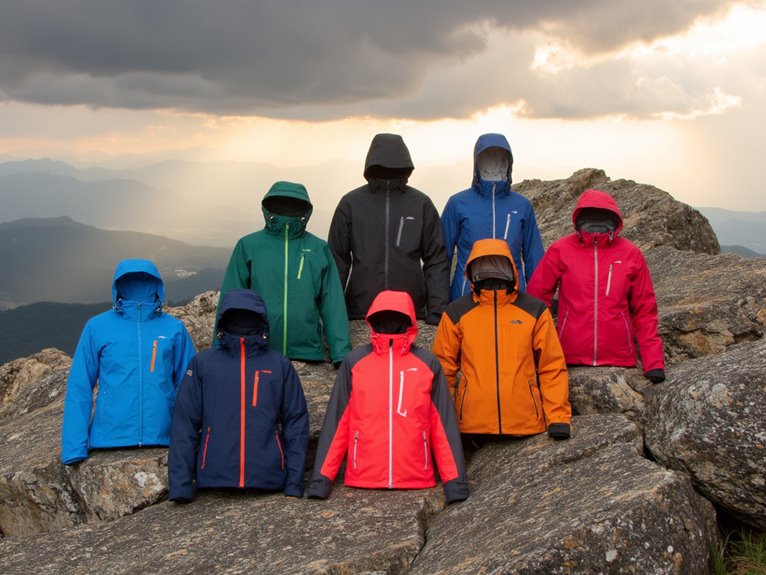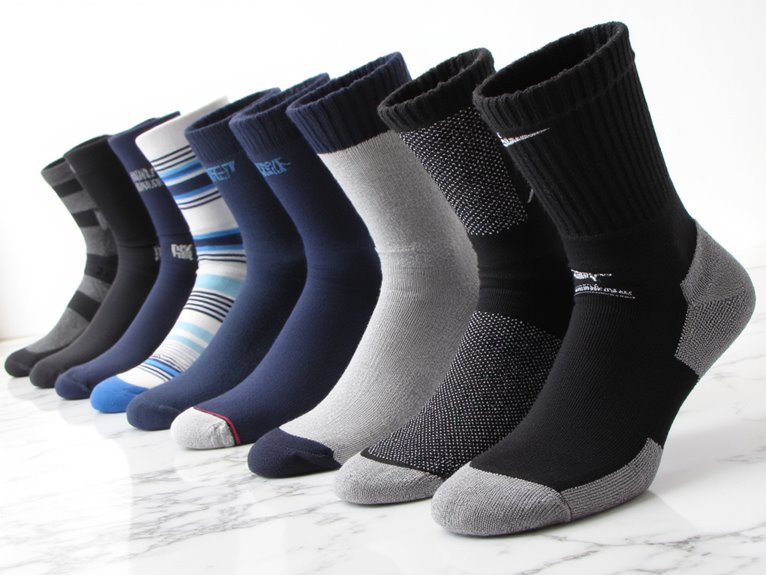Should Backpack Be on Hips or Waist?
The optimal backpack placement is determined by the individual's body type and activity, with the hips and waist serving as key anchor points to distribute weight efficiently and promote comfortable carrying. A well-fitting backpack should sit comfortably on the back, with the hip belt snug around the hips and the shoulder straps resting comfortably on the shoulders. Waist-level backpacks offer ideal weight distribution and improved mobility, while hip-hugging backpacks provide added stability and reduced fatigue. Depending on the activity and body type, the sweet spot may vary, and finding the perfect balance is crucial for a comfortable and enjoyable experience, and there's more to explore on this topic.
We are supported by our audience. When you purchase through links on our site, we may earn an affiliate commission, at no extra cost for you. Learn more. Last update on 20th January 2026 / Images from Amazon Product Advertising API.
Anatomy of a Comfortable Fit
A well-fitting backpack begins with a comfortable torso length, which is determined by the distance between the seventh cervical vertebra (C7) and the hip belt or iliac crest.
This measurement guarantees the pack sits comfortably on the back, allowing for perfect weight distribution and reducing fatigue.
A proper torso length also enables the shoulder straps to fit snugly, preventing slipping and discomfort.
When trying on a backpack, adjust the torso length to fit your body, verifying the shoulder straps rest comfortably on your shoulders and the hip belt sits snugly around your hips.
A well-fitting backpack is essential for comfortable carrying, and getting the torso length right is the first step.
Hip-Hugging Backpack Benefits
Properly positioned hip belts, which hug the hips snugly, allow for efficient weight transfer and redistribution, consequently reducing the strain on the shoulders and back. This redistribution of weight enables a more comfortable and balanced carrying experience.
Improved posture: By transferring weight to the hips, the spine remains upright, reducing fatigue and discomfort.
Reduced fatigue: Efficient weight distribution reduces the energy expended on carrying the pack, allowing for longer, more comfortable hikes.
Enhanced stability: The snug fit around the hips provides added stability, reducing the likelihood of the pack shifting during movement.
Increased endurance: With reduced strain on the shoulders and back, hikers can enjoy longer, more comfortable journeys.
Better balance: The weight of the pack is evenly distributed, allowing for better balance and agility on uneven terrain.
Waist-Level Backpack Advantages
Positioning a backpack at waist level offers numerous advantages, including ideal weight distribution and improved mobility.
By carrying the load at waist level, the weight is more evenly distributed, reducing strain on the shoulders and back.
This allows for a more comfortable and efficient carrying experience.
Additionally, waist-level backpacks promote better posture and balance, enabling individuals to move freely and effortlessly.
In addition, waist-level backpacks are less likely to shift or swing, reducing the risk of accidents or injuries.
The Importance of Spine Alignment
Maintaining proper spine alignment is essential when wearing a backpack, as it profoundly impacts the overall health and well-being of the wearer.
When the spine is properly aligned, the weight of the backpack is distributed evenly, reducing strain on the back and promoting ideal spinal health.
Proper Posture Matters
When wearing a backpack, aligning your spine is essential to avoiding discomfort, fatigue, and even long-term musculoskeletal damage. Proper posture is critical to maintaining a healthy back and preventing strain.
Stand up straight with your shoulders relaxed and down.
Keep your head level and in line with your shoulders.
Engage your core muscles to support your lower back.
Keep your backpack close to your body to maintain balance.
Avoid leaning forward or to one side, which can put unnecessary strain on your back.
Reducing Back Strain
Proper spine alignment is essential for reducing back strain, as it allows the muscles and bones to work together efficiently, distributing the weight of the backpack evenly and minimizing the risk of discomfort and injury.
When the spine is aligned, the weight of the backpack is transferred to the hips and legs, rather than the back, reducing the pressure on the spine and surrounding muscles.
This, in turn, reduces the risk of strain and discomfort, allowing individuals to carry their backpack with confidence and comfort.
Spinal Health Benefits
Aligning the spine while wearing a backpack is essential for overall spinal health, as it helps to prevent long-term damage and promotes a stronger, more resilient back.
Proper spine alignment also improves posture, reducing the strain on muscles and joints. This, in turn, reduces the risk of back pain and other musculoskeletal issues.
Some key benefits of maintaining spine alignment while wearing a backpack include:
- Improved posture and reduced strain on the back
- Reduced risk of long-term spinal damage
- Stronger, more resilient back muscles
- Improved breathing and respiratory function
- Boosted overall physical performance and endurance
Backpack Weight Distribution Matters
Proper weight distribution in a backpack is essential, as it profoundly affects the comfort and stability of the wearer during outdoor activities.
When the weight is evenly distributed, the wearer can maintain good posture, reducing fatigue and discomfort.
Conversely, uneven weight distribution can lead to strain on the back, shoulders, and hips, causing discomfort and potentially even injury.
To achieve ideal weight distribution, pack heavier items at the bottom and closer to the back, with lighter items towards the top and away from the back.
This strategy helps to maintain balance and stability, allowing the wearer to move freely and comfortably.
Comfort Vs. Support: the Tradeoff
In terms of backpack position, finding the perfect balance between comfort and support is vital.
This delicate tradeoff is influenced by three key factors: waist relief, hip flexibility, and torso alignment.
Waist Relief Matters
Optimizing waist relief in backpack design involves a delicate balance between comfort and support, as excessive padding can compromise structural integrity while inadequate cushioning can lead to discomfort and fatigue.
To strike the right balance, consider the following key factors:
Weight distribution: Guarantee the backpack's weight is evenly distributed across the waist belt to prevent hotspots and discomfort.
Cushioning: Provide adequate cushioning to absorb shock and reduce pressure points, but avoid over-padded areas that can compromise structural integrity.
Breathability: Incorporate breathable materials to promote airflow and prevent moisture buildup.
Adjustability: Design the waist belt to be adjustable, allowing for a customized fit and peak comfort.
Ergonomics: Consider the natural curves of the human body, designing the waist belt to follow the contours of the waist and hips, thus guaranteeing a comfortable and tailored fit.
Hip Flexibility Counts
One essential aspect of backpack design is understanding the delicate interplay between comfort and support, as excessive flexibility in the hip area can compromise structural integrity, while insufficient flexibility can lead to discomfort and restricted mobility.
A balance must be struck to guarantee the backpack stays secure without hindering hip movement.
Rigid hip belts can restrict flexibility, causing discomfort and fatigue, while overly flexible designs may compromise support.
A midpoint between these extremes is necessary, allowing for a full range of motion while maintaining stability.
Torso Alignment Key
Proper torso alignment is essential in backpack design, as it directly influences the delicate balance between comfort and support, where even slight deviations can result in discomfort, fatigue, or compromised structural integrity.
A well-designed backpack should promote a neutral spine, with the load evenly distributed across the back and hips. This balance is vital, as it prevents strain on the muscles and joints.
Key considerations for ideal torso alignment include:
Maintaining a neutral spine and pelvis
Distributing the load evenly across the back and hips
Avoiding forward leaning or arching
Keeping the shoulder straps snug but not constricting
Ensuring the backpack's center of gravity is close to the body
Body Type and Backpack Position
The position of a backpack on the back is greatly influenced by an individual's body type, with different body shapes and sizes requiring distinct backpack placements to promote maximum comfort and weight distribution.
For instance, individuals with shorter torsos may require a higher backpack placement to avoid the pack sagging too low, while those with longer torsos may prefer a lower placement to maintain balance.
In the same way, individuals with larger or more athletic builds may benefit from a lower backpack position to distribute weight evenly, whereas those with smaller frames may prefer a higher placement to avoid strain on the shoulders and hips.
Activity-Specific Backpack Placement
Depending on the specific activity or environment, backpack placement can be adjusted to enhance performance, comfort, and safety.
For instance, during high-intensity activities like running or hiking, a lower backpack placement can help improve balance and stability.
Conversely, during low-intensity activities like casual walking, a higher backpack placement can promote better posture and reduce fatigue.
For cycling, consider a lower backpack placement to reduce wind resistance and improve aerodynamics.
For skiing or snowboarding, a higher backpack placement can help maintain balance and stability on uneven terrain.
For long-distance hiking, a mid-backpack placement can provide ideal balance and comfort.
For rock climbing, a lower backpack placement can help maintain a lower center of gravity and improve balance.
For everyday commuting, a mid-backpack placement can provide comfortable support and easy access to belongings.
Finding Your Personal Sweet Spot
By experimenting with different backpack placements and activities, you can identify a personalized sweet spot that optimizes comfort, performance, and safety.
This sweet spot may vary depending on individual factors, such as body type, fitness level, and activity intensity.
To find your sweet spot, try adjusting the backpack's position during different activities, such as hiking, running, or cycling.
Pay attention to how your body responds to different placements, noting any discomfort, fatigue, or restricted movement.
Through trial and error, you'll find the ideal position that balances comfort, stability, and mobility.






